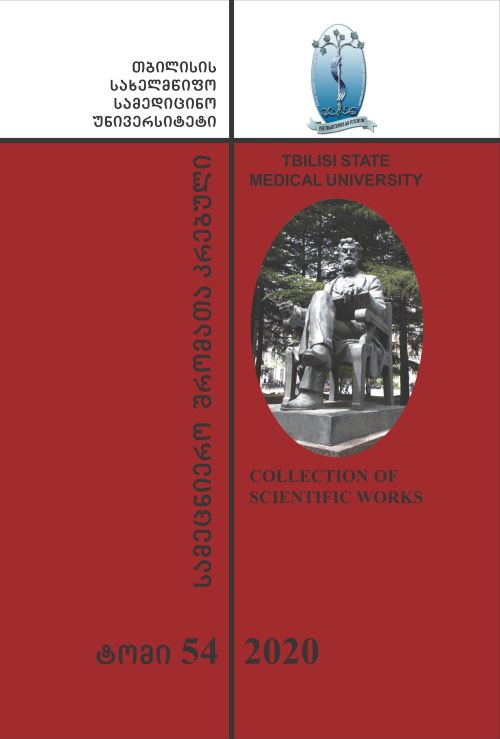ანოტაცია
ტრანსპლანტაციის დროს ერთ-ერთ ძირითად პრობლემას წარმოადგენს, პაციენტთა უზრუნველყოფა ადამიანის ორგანოებითა და ქსოვილებით, რომლებიც ყველა პაციენტისათვის არ არის ხელმისაწვდომი როგორც ფიზიკურად, ასევე ეკონომიკურად. სამწუხაროდ, არცთუ იშვიათ შემთხვევაში, დონორის როლს ასრულებს ჯანმრთელი ადამიანი, რაც იწვევს მის დაინვალიდებას. აღსანიშნავია ის გარემოებაც, რომ ცხოველური ორგანოებისა და ქსოვილების ტრანსპლანტაციის დროს ადგილი აქვს იმუნური სისტემის აგრესიულ რეაქციას, არსებობს რისკები პაციენტის ორგანიზმში სხვადასხვა, გადამდები დაავადებების გადატანისა. რეგენერაციულ მედიცინაში ტრანსპლანტაციისთვის საჭირო მასალების ალტერნატიულ წყაროდ შეიძლება განვიხილოთ მცენარეები. მცენარეულ და ცხოველურ ქსოვილებს შორის არსებობს ძალიან ბევრი სტრუქტურული მსგავსება. ამასთან, მცენარის ძარღვოვანი ქსელი შეიძლება გამოყენებული იქნეს როგორც საკვები ნივთიერებების გადამტანი, ისევე, როგორც სისხლძარღვები ადამიანის ორგანიზმში [2,3,4,5]. დეცელულარიზებული მცენარე შეიძლება გახდეს უნიკალური და მრავალფუნქციური სამედიცინო მოწყობილობა, მცენარეული მატრიქსი, ე.წ. "სკაფოლდი", ქსოვილოვან ინჟინერიაში. აღნიშნული საკითხი აქტუალურია თანამედროვე მედიცინასა და ფარმაციაში.
წყაროები
Ржеусский С. Э. Валидация спектрофотоме¬трической методики количественного определения наночастиц серебра в водных растворах// Вестник фармации.-2019-Nl.-C. 21-25.
Vacanti J. Tissue engineering and regenerative medicine: from first principles to state of the art. Journal of Pediatric Surgery. 2010;45(2):291294.
Guyette J, et al. Bioengineering Human Myocardium on Native Extracellular Matrix. Circulation Research. 2016;118(1):5672.
Modulevsky D, Cuerrier C, Pelling A. Biocompatibility of Subcutaneously Implanted Plant-Derived Cellulose Biomaterials. PLoS One. 2016;11(6):e0157894.
Gershlak J, et al. Crossing kingdoms: Using decellularized plants as perfusable tissue engineering scaffolds. Biomaterials. 2017;125:1322.
